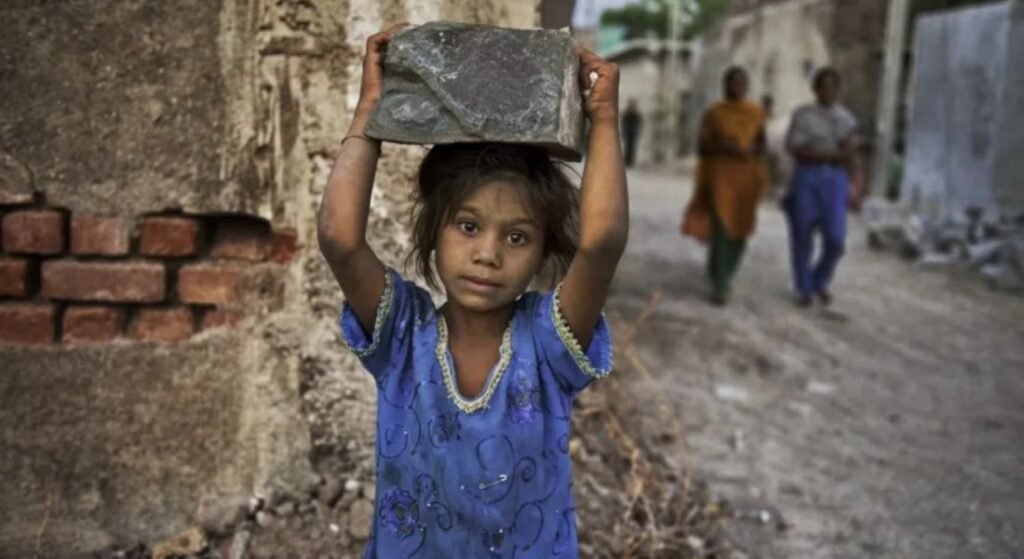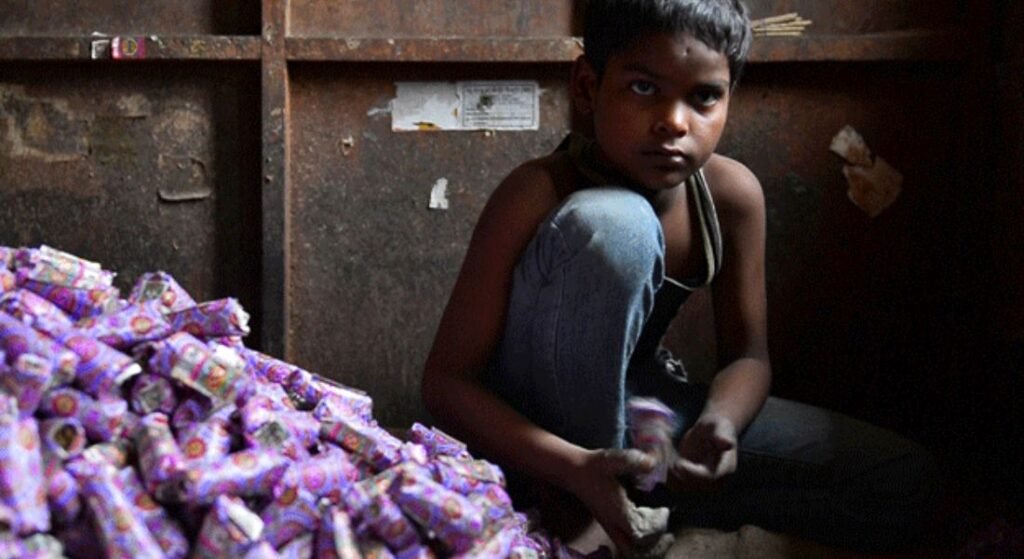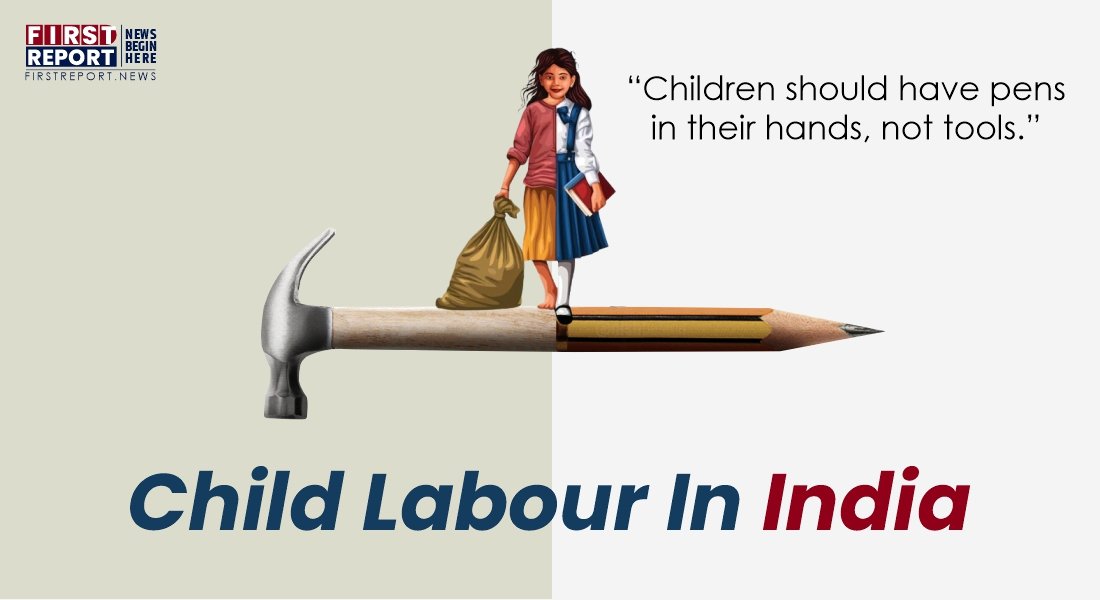Child labour, a dark stain on India ‘s progress, continues to plague the nation. Despite strict laws and concerted efforts, countless children are forced into exploitative work, robbing them of their childhood, education, and future. A recent rescue operation in Delhi revealed this harsh reality once again, with 18 children liberated from a jute factory where they experienced forced labor. This incident serves as a stark reminder of the challenges that persist in eradicating this social evil.
In a joint operation conducted by the Delhi Police and the Labour Department of the city government. Eighteen children, aged between 11 and 17, were recently rescued from a jute factory in Delhi (Bhajanpura). They were identified as Aslat, Rajkumar, Vicky, Pintu, Sarvesh, Aehsan, Satender, Ansari and Sahil Dabas.
Accordingly, an FIR was registered under relevant sections of the Juvenile Justice (Care and Protection of Children) Act and Child Labour (Prohibition and Regulation) Act at Bhajanpura police station, and action against 9 accused persons who were running the jute bag manufacturing factory was initiated.
Stats of Child Labour in India
- Total child population (5-14 years) in India: 259.6 million (Census 2011)
- Working children in India: 10.1 million (3.9% of total child population) as “main workers” or “marginal workers”
- Out-of-school children in India: over 42.7 million
- Decline in child labour in India between 2001-2011: 2.6 million
- The decline was more pronounced in rural areas, while urban areas saw an increase in child workers
- Worldwide estimates for child labour in 2008: 153 million children aged 5-14
- Worldwide estimates for child labour in 2016: 152 million children
- Worldwide estimates for child labour in 2020: increased by 9 million due to the COVID-19 pandemic
- Africa has the highest percentage of children aged 5-17 employed as child labour
- Asia has the largest number of children employed as child labour at about 114 million
Also Read: Online Vs Offline Shopping
What is Child Labour?
People exploit children through any form of work that restrict them from attending school or harms them mentally, physically, socially, or morally.
Child labour remains a pressing issue in India, despite legal prohibitions and concerted efforts. This problem is deeply rooted in socio-economic conditions, depriving millions of children of their fundamental rights to education, health, and childhood.
- Due to economic hardship, many families send their children to work instead of school, which is an important source of income.
- Limited access to quality education, especially in rural areas, pushes children into the workforce.
- Families caught in a cycle of debt often use their children as collateral, resulting in forced labour.
- Children are often attracted or kidnapped and forced into various forms of labour, including domestic work, begging, and prostitution.
- Children are exposed to dangerous environments, long working hours, and physical and mental abuse.
Also Read: Why are trees painted in India

Initiatives Against Child Labour by the Indian Government
Child Labour (Prohibition and Regulation) Act, 1986: Prohibits employment of children in unsafe occupations and regulates working conditions for children in other sectors.
National Policy on Child Labour (1987): Focuses on rehabilitation of children working in dangerous jobs rather than solely on prevention.
Juvenile Justice (Care and Protection of Children) Act, 2000: Recognizes working children as needing care and protection, addressing issues of exploitation and cruelty.
Right to Education Act, 2009: Mandates free and compulsory education for children aged 6 to 14 years, aiming to keep them in school and out of work.
Amendment Act, 2016: Completely bans employment of children below 14 years and prohibits adolescents (14-18 years) from working in hazardous conditions.
Also Read: Old Age Homes in India 2024
| Year | Estimated Child Labourers in India | Legislation/Initiatives | Global Child Labour Statistics |
| 2001 | 12.6 million | Child Labour (Prohibition and Regulation) Act, 1986 | 246 million worldwide |
| 2011 | 10.1 million | Amendment to Child Labour Act, 2016 | 152 million worldwide |
| 2021 | 7.9 million (projected) | Right to Education Act, 2009 | 160 million worldwide (first increase in two decades) |
| 2023 | 7.8 million | National Child Labour Projects | Increase of 9 million due to COVID-19 pandemic |
| 2024 | Data not yet available | Continued efforts to eliminate child labour | Ongoing global concern, with 1 in 5 children engaged in child labour in the poorest countries |
Also Read: Pandit Indresh Upadhyay ji
- Child Labour Complaint Number: The Ministry of Labour & Employment, Government of India, allows you to report child labour concerns through the PENCIL portal (pencil.gov.in).
- Programme for the National Child Labour Project (NCLP): This programme enrolls kids in school and prevents them from working in order to empower and motivate them.
- World Day Against Child Labour 2024: This observance will take place on June 12, 2024. The focus will be on raising awareness and promoting actions to eliminate child labour globally.
- People will highlight efforts and activities against child labor around June 12, 2024, as part of the global campaign Anti-Child Labour Day 2024 to stop child labor.

Negative Impact of Child Labour
- Child labour restricts educational opportunities, limiting future earning potential and perpetuating the cycle of poverty.
- Children engaged in labour often suffer from physical injuries, malnutrition, and exposure to harmful substances.
- The harsh conditions of child labour can lead to severe emotional and psychological distress.
- Children are vulnerable to exploitation and abuse, including sexual harassment and violence.
- Child labour worsens social inequalities, as it primarily affects children from marginalized communities.
Also Read: Why More Females Are Doing MBA?
Positive Side of Child Labour
- In many poor families, children contribute financially, which can be crucial for family survival. Their earnings may help pay for essential needs, such as food, clothing, and school fees.
- In some cases, children work in family businesses, assisting in tasks that can increase productivity. This involvement can encourage a sense of responsibility and provide practical skills that may benefit them in the future.
- Engaging in work can help children acquire skills and experience that may be valuable later in life. This includes learning about work ethics, responsibility, and even specific trade skills, which could improve their employability as adults.




